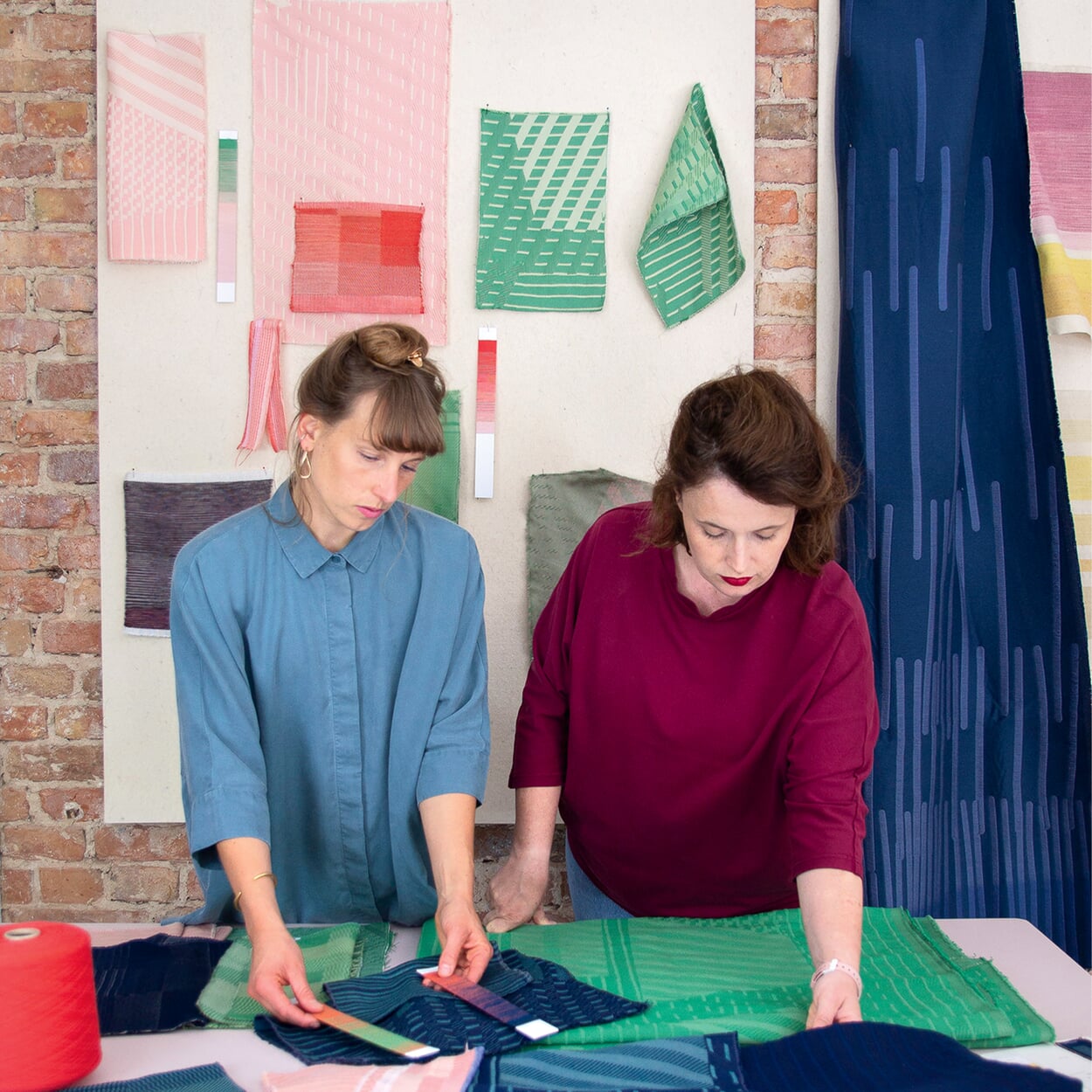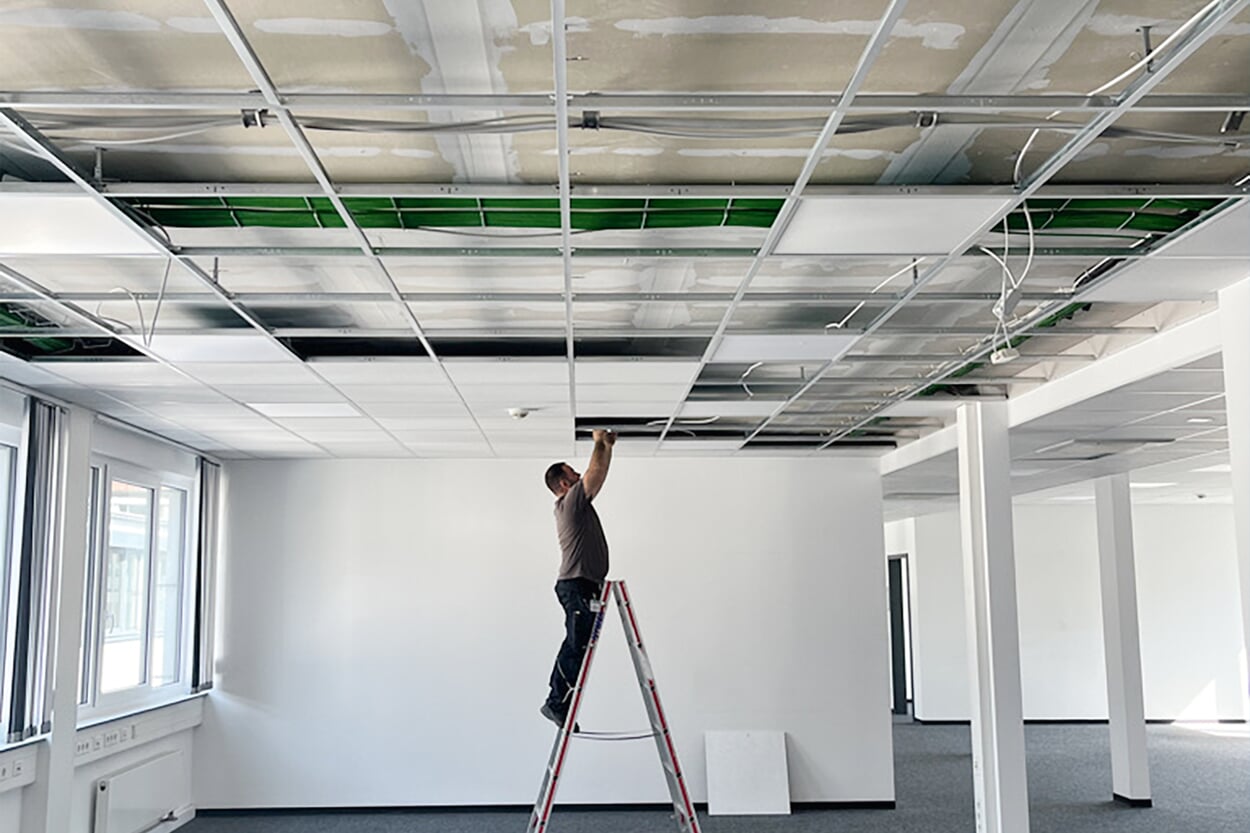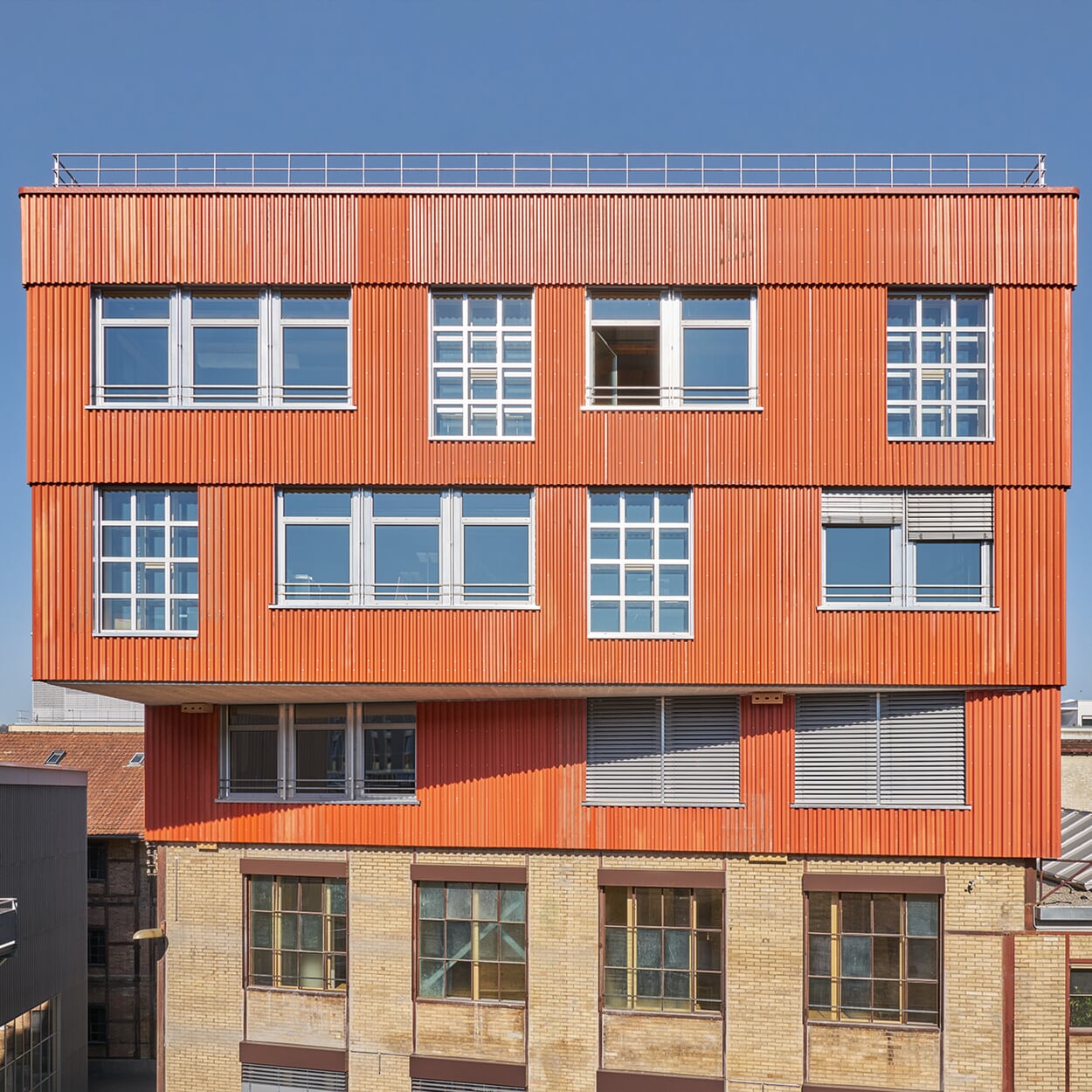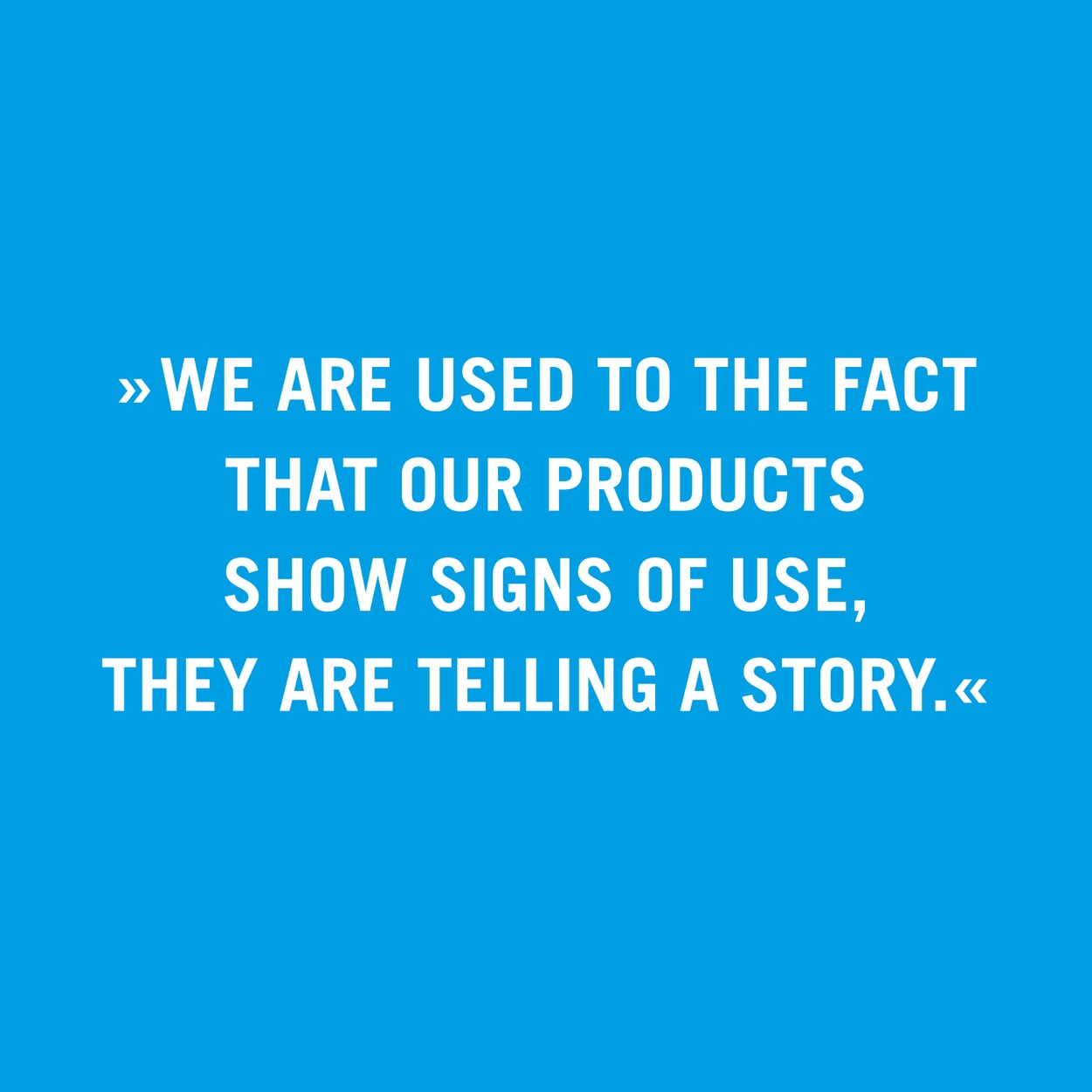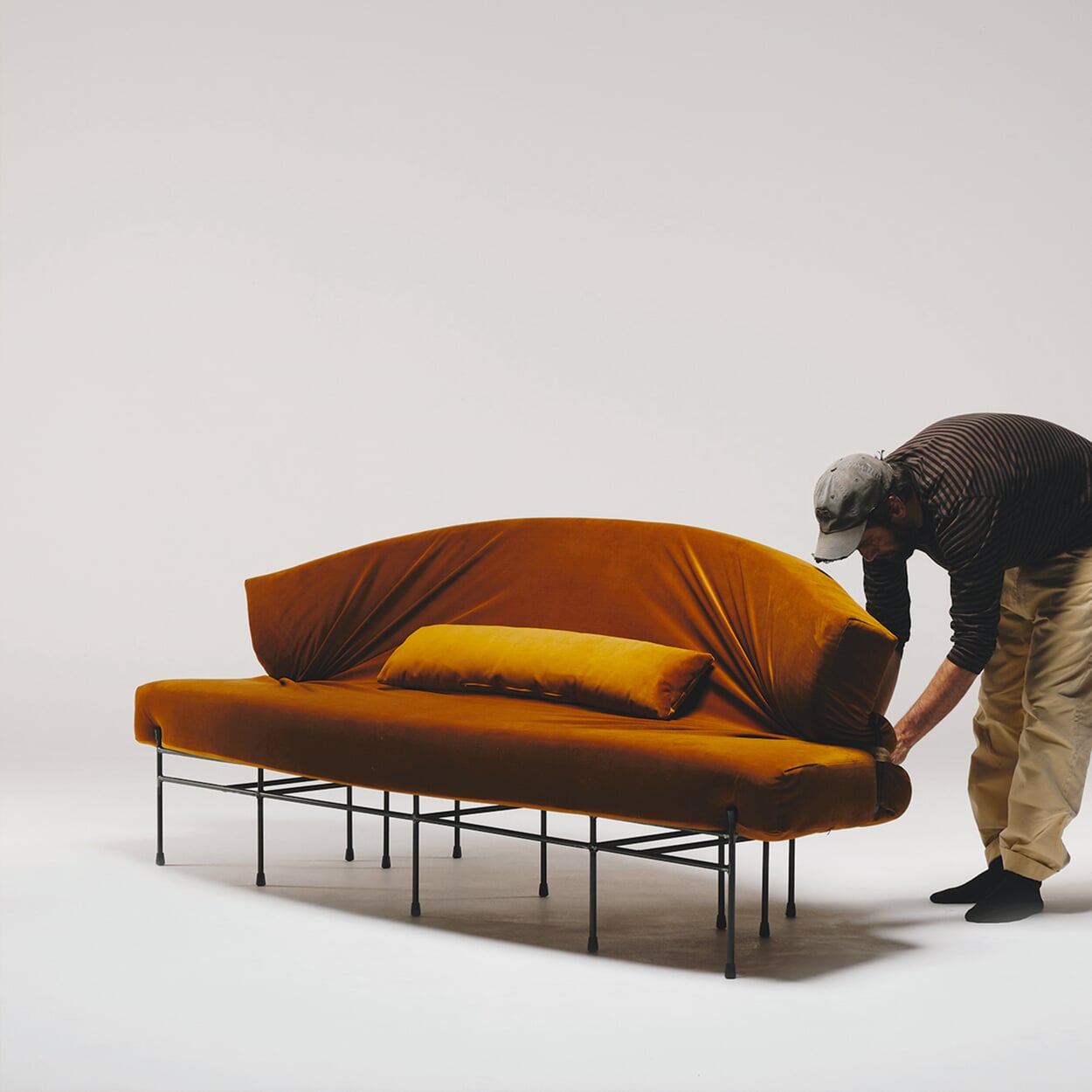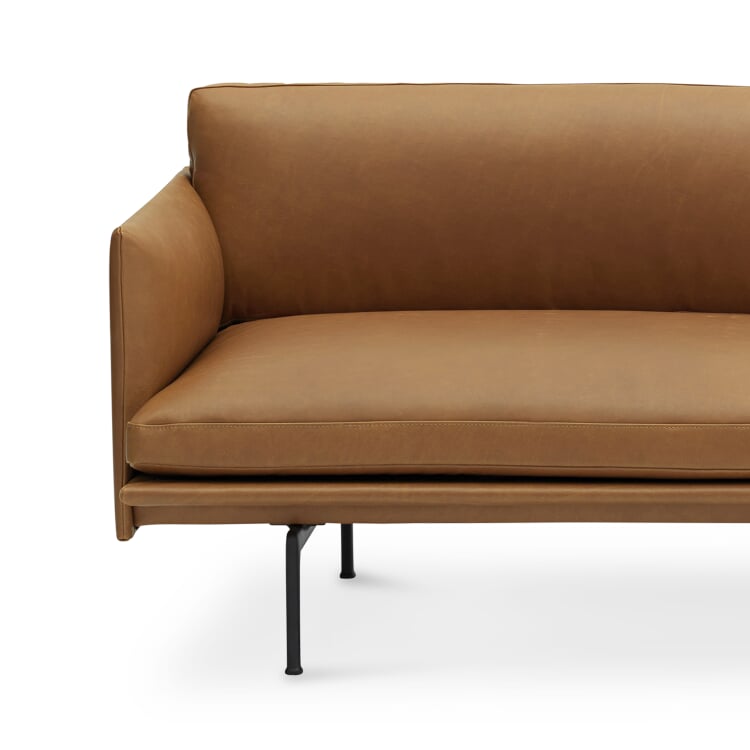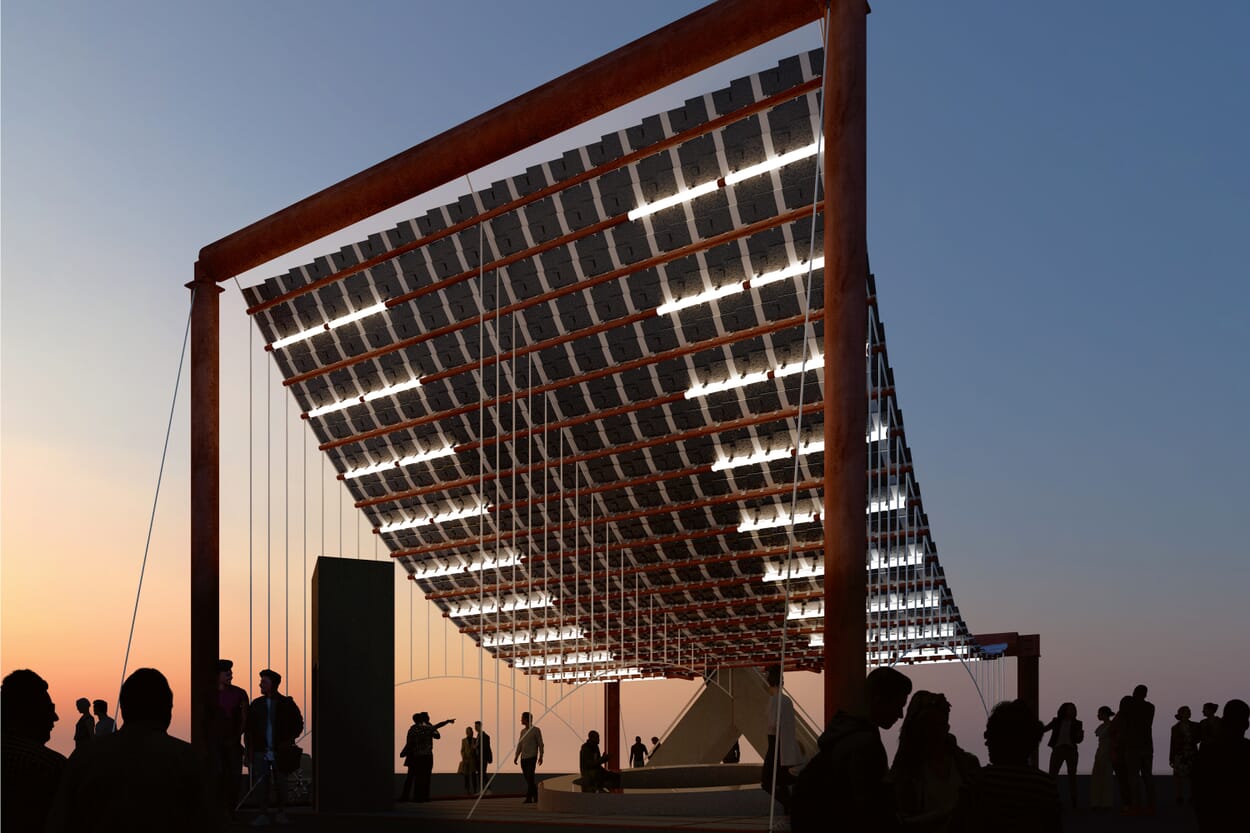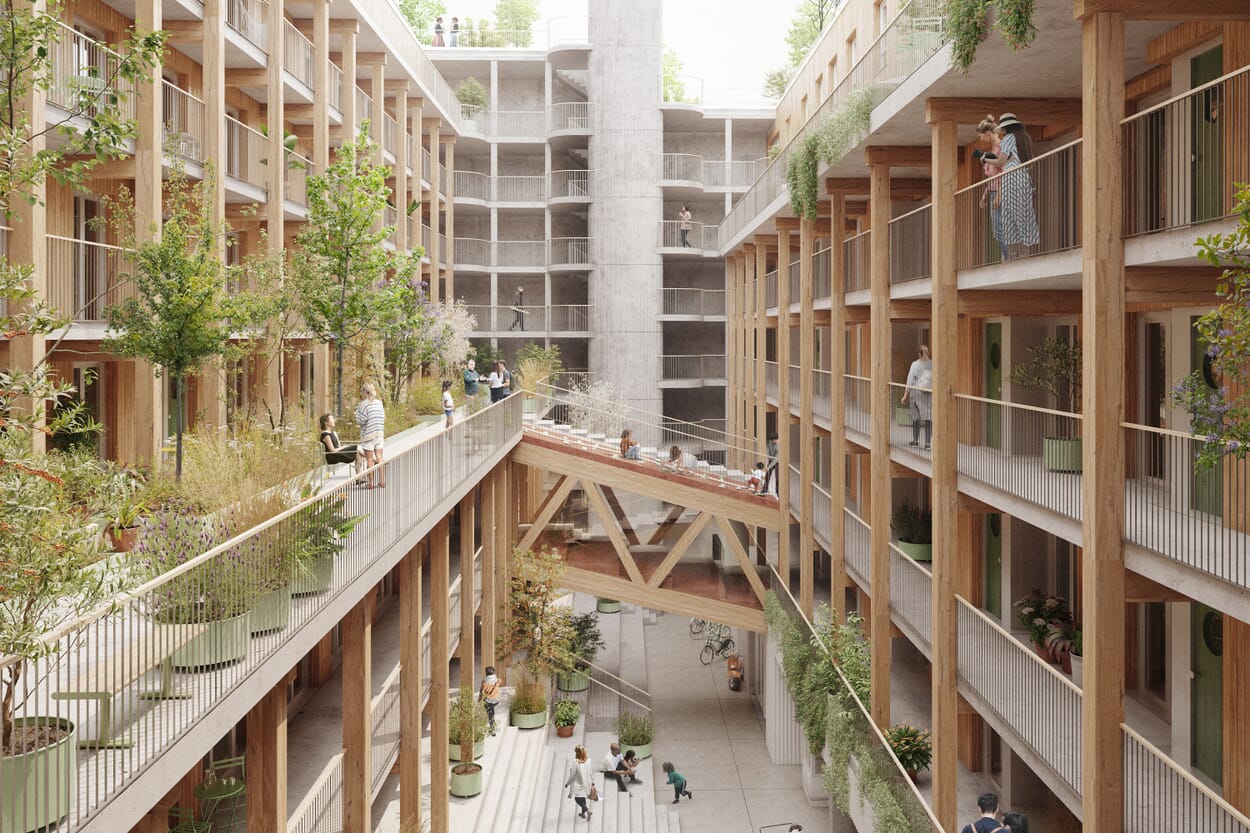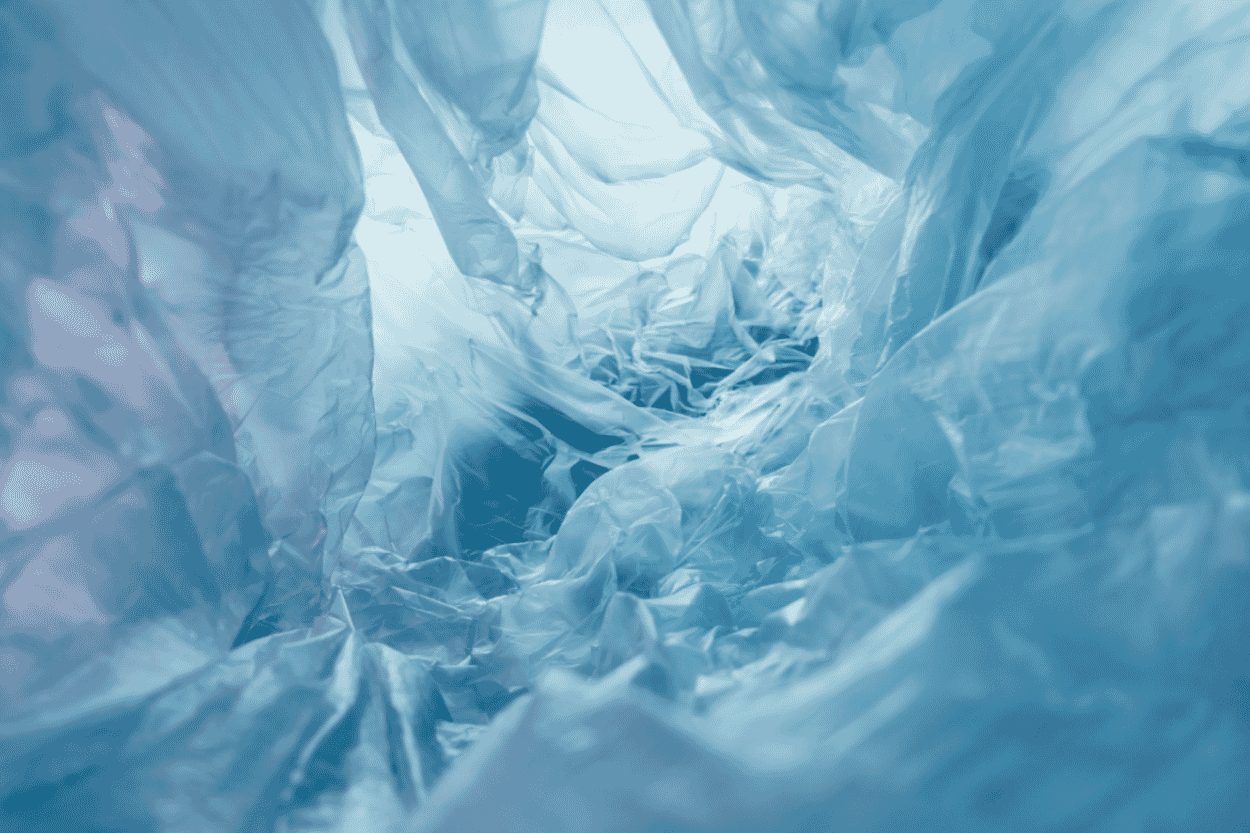Aging desired!
It is welcome on vintage furniture, but not so much on plastic objects: patina tells stories of the past and strengthens our bond with objects. In design and architecture, it can become a sustainability factor: If we see traces of use and ageing as something positive, we use things for longer.
Text:Jasmin Jouhar
You have to be able to put up with patina. When the sparkling silver cutlery becomes dull and the shiny gold brass chandelier starts to tarnish, many people reach for polishing paste and cleaning cloth and polish until the good pieces shine like new again. The internet is full of tips and tricks on how to get surfaces as shiny as possible. Tiles made of porcelain stoneware or natural stone, floors made of PVC or linoleum, kitchen worktops made of plastic or wood? Furnishing decisions are often made on the assumption that a material is "easy to clean" and hard-wearing. What is actually meant by this is that its appearance changes as little as possible, even over a long period of time. Traces of use can either be avoided or easily removed - the material does not age, at least not visibly. The fact that all things are inevitably subject to change, that decay is constantly at work all around us, is not something we want to be made aware of - if we can already feel it ourselves. This is how consumer society works: as soon as things age, they lose value. The best example is the car, which is already worth a quarter less one year after purchase. And if the car, the jacket or the sofa cushion are no longer in top condition, they are replaced by something new. Industrialized mass production makes this possible. Continuous demand keeps the economy running, right down to the absurdly short life cycles of smartphones. Spoiled by the constant stream of affordable goods, we have forgotten how to endure ageing. And to accept decay as an inevitable part of the world of things.
The feeling of growing old together
Patina is a question of perspective: "We appreciate the fact that you can see Objekten their use and see it as a compliment to the respective product," says Sarah Meyers. "Patina tells a story of the past - of what no longer exists. Material lives with people and through contact with them," continues the designer. Meyers has been running the Meyers&Fügmann design studio in Berlin together with Laura Fügmann since 2015. The two have been researching the ageing processes of textiles for several years and making these processes part of their design. They consciously take into account the fact that natural yarns such as wool can fade under the influence of UV radiation, while synthetic yarns are "lightfast", meaning they hardly lose any of their color intensity. Meyers&Fügmann develop "slow patterns", i.e. home textiles with woven-in patterns that only become visible over time. When the wool fibers of a curtain fabric fade in sunlight, creating a contrast with the synthetic ones, the pattern, which is only latent after production, begins to emerge, almost like exposing a photo in a darkroom. The process takes different lengths of time depending on the intensity of the UV radiation. "We really like the fact that the speed at which the changes happen varies greatly from place to place, depending on the sunlight and window quality. That's the great thing about the process, the light creates individual images!" says Sarah Meyers.
How textiles age - Meyers&Fügmann came across this topic when they were looking at sustainability issues. One factor when it comes to the sustainability of products is longevity. Put simply, the longer an item is in use, the less significant the impact of its manufacture and disposal. "Many designers claim that their products are sustainable because they are appreciated for a long time," says Sarah Meyers. "This got us thinking about longevity that embraces change and is based on a sense of ageing together." With their "Slow Patterns", the two not only make the inevitable ageing process visible and thus conscious. They stage it as part of the design and give it its own aesthetic value. The textiles do not become unsightly over time - on the contrary, it is only through fading that they develop their full beauty. And because the users, as witnesses of this process, build up an emotional bond with the textiles, they will, according to the idea, not dispose of the fabrics so quickly, but - on the contrary - cherish them for a long time.
Using the term patina to describe the traces of use and ageing in a positive light is familiar from the antiques and vintage furniture trade. Here, patina is seen as a sign of age and therefore of authenticity. Leather upholstery may be darkened and stained, and scratches or minor damage to wooden surfaces are also tolerated. Because patina functions as evidence in this case, it can sometimes happen that something is touched up afterwards. In the disciplines of heritage conservation and restoration, on the other hand, the conviction has prevailed that patina is part of the history of a building or object and should not be removed if possible. This can be a balancing act if damage has to be repaired at the same time - as the head restorer at the design museum Die Neue Sammlung explains in an interview with MAGAZIN using plastic furniture as an example (read the full interview with Tim Bechthold from page 14). Plastic is a complicated material when it comes to patina anyway. Because aging beautifully, as it is commonly called, is actually only granted to materials of natural origin. Whether leather or wood, marble or copper, wool or clay - these are all materials that have been part of the human canon of materials for thousands of years and to whose signs of ageing we are accustomed. Plastics, on the other hand, have only been present in our everyday lives for just over a hundred years. When plastic products age, become brittle, discolored or decompose, we usually dispose of them fairly quickly. As they are often quite cheap, we can afford to do so. Developing a patina is not yet planned for plastics. And from an ecological perspective, it may not be desirable either: when plastics break down, they produce small, non-biodegradable particles - microplastics. We are only just beginning to understand how extensive the effects of these particles are on the ecosystem and on our own health.
Houses made from used components
The acceptance of patina, i.e. the visible phenomena of ageing - the Italian term originally only referred to a thin layer on the surface of a material - is part of Teresa Hartmann's everyday life. The architect works as a materials manager at Concular. The company is committed to circular construction, deals in used materials and supports architects in planning houses with reused components. What can be removed and recycled, what is too old or worn out and needs to be disposed of? This involves façade cladding, doors, windows, system components such as partition walls or raised floors, air conditioning systems, but also smaller objects such as washbasins, emergency exit signs or waste garbage cans. Hartmann is in contact with architects and advises them in their search for solutions for circular construction.
"We are used to all our products having signs of use, we work with recycled materials, they simply tell a story," says Hartmann. For her, patina is a positive thing. Some products only become really charming with a "used look", she says. As an example, the architect cites a large number of orange-colored metal lockers that she salvaged from a building some time ago. "If they have a scratch here and there, they look really chic. It romanticizes the products." If necessary, Concular also reconditions the recovered materials before selling them. Granite façade slabs - sanded and cut - can be given a new life as flooring. "Stone is durable and can be easily refurbished," says Hartmann. In her experience, other natural materials such as wood are also suitable for recycling. However, the cycle cannot always be closed, for example when it comes to safety. For example, Concular cannot recycle fire doors from before the year 2000 as they no longer comply with current regulations.
However, the aura of patina is at most a side effect for most of Concular's customers. "The price factor is a decisive factor in why people opt for reused materials," says architect Teresa Hartmann. "We make sure that our products are cheaper than the new price." Another driver for building with used materials is sustainability certificates, she explains. For larger real estate projects in particular, the relevant certificates are important for marketing, and the use of circular products is credited accordingly in the certification process. This is also one of the reasons why circular construction is becoming more popular - despite significant obstacles such as a lack of warranty for the products. Pioneers such as Baubüro in situ from Basel or Rotor from near Brussels have been working with this approach for years and have proven it many times over with residential and commercial buildings, schools and offices: It works! The use of second-hand materials has become a real trend, especially in smaller interior design projects, and is also popular with an independent "used" aesthetic. Spanish designer Lucas Muñoz Muñoz, for example, has found a particularly contemporary form for this with his projects such as the award-winning interior of the "Mo de Movimiento" restaurant in Madrid. Muñoz Muñoz has constructed these to a large extent from materials already present in the building. Patina is not a necessary evil here, but a unique aesthetic feature. And so it is very easy to endure.
Shine and stainless steel
The allure of freshness and flawlessness: new products have an irresistible aura, no question about it. But because regular use leaves its mark, it is worth paying attention to how materials and surfaces change. Wood, for example, turns grey, hot-dip galvanized steel becomes matt, light-coloured leather darkens. Six examples from the MAGAZIN range that prove it: Patina makes products age more beautifully!
Field chair
The FIELDCHAIR folding armchair looks like it can take a beating. And it really can: the solid squared timbers are made of weather-resistant larch wood. The hard yet resilient softwood does not crack easily and takes on a gray patina. The surface is untreated ex works and can be treated with oil. One advantage of solid wood is that it can be sanded down in the event of minor damage or stains. Then it looks like new again.
FUEGO
Precious rust? Yes, there is. This is the name of the top layer of rust that forms on so-called Corten® steel when exposed to the weather. This protective patina not only looks decorative, but also prevents further oxidation. The FUEGO barbecue made of Corten® steel is gray on delivery, but quickly turns rust-red in its natural habitat. Thanks to the patina, it is particularly hard-wearing and requires no maintenance.
FRB
Linoleum is definitely underrated (more on this on page 170): Not only is the material made from renewable raw materials, it also ages attractively in use. Fresh from the press, it has a rich matt surface. It takes on a silky sheen over time in areas that are touched a lot. It is also easy to care for with mild cleaning agents and oils. Proven in the MAGAZIN range: the FRB table tops covered with linoleum.
W227 ALU NATURE
Although manufactured in large quantities, each table lamp W227 in the natural aluminum version is unique. This is because its aluminium parts are trowalized. This industrial finishing process creates an irregular, matt, compacted surface. Pre-patinated accordingly, the aluminum does not tarnish later. Where it is frequently touched, for example on the luminaire head, it develops a slight sheen.
BASILEA
Bathed in molten zinc at around 450 °C: hot-dip galvanized steel, as used for the BASILEA chair and table combination, is very hard-wearing. The material is therefore ideal for outdoor furniture that is exposed to the weather. The initially matt silver zinc surface, which protects the steel like a patina, becomes matt and darkens evenly. If necessary, it can be polished with a scouring pad.
OUTLINE
Leather sofas are considered a classic among upholstered furniture, and for good reason: while fabric covers wear out over the years, leather becomes more and more beautiful thanks to its patina. A cognac tone in particular, as with the OUTLINE model, ages well, it darkens, wrinkles and signs of wear make it look more vibrant. To keep the surface soft, regular cleaning and care is recommended, depending on the type of leather.
Images: iStock, cjmckendry; Pauline Agustoni; Marie Rime; © Concular; Project: Poha Preuswald Aachen, Design & Build; Martin Zeller; Ateno_BorjaLlobregat; Gonzalo Machado
More interesting facts
Designers such as Marjan van Aubel, Samuel Wilkinson and Pauline van Dongen show that solar technology can do much more than generate electricity. They design lamps, tables and shirts that charge cell phones, bring light into the dark and are, of course, well designed.
In the hall, in the cluster or even in the house from the printer - these are just three of many answers to the burning question of what the living of the future could look like. Because one thing is clear: instead of standard floor plans and concrete castles, we need more variable, diverse and environmentally friendly living space.
Time for a thought experiment! What if plastics were a valuable resource - and not available cheaply and endlessly? the goal: to consume plastics more consciously - away from disposable, towards long-term use, away from packaging that is quickly disposed of, towards sensible, recyclable plastic products.



